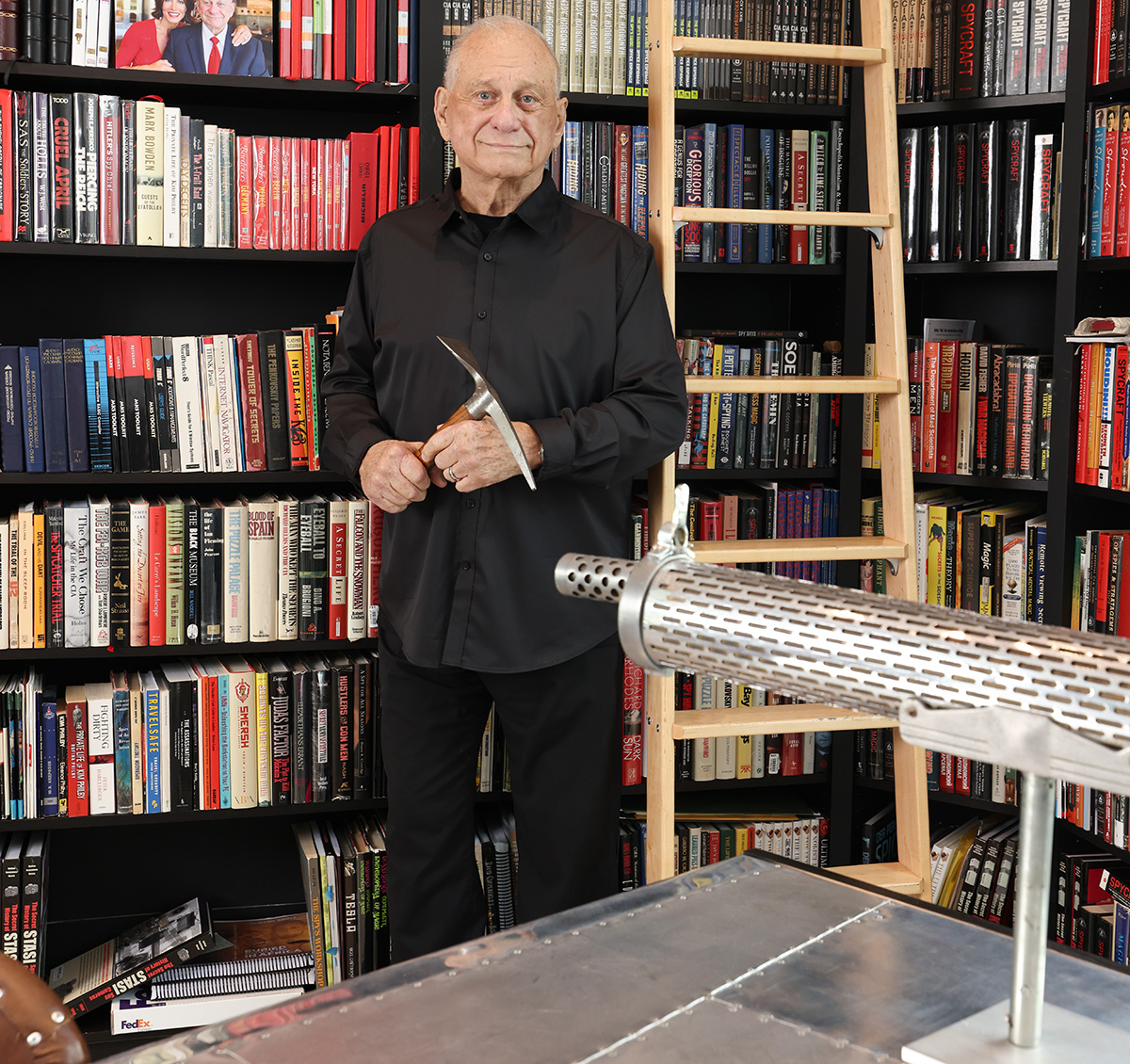H. Keith Melton discusses Cold War-era Soviet spy cameras with the same enthusiasm and awe that an art collector might discuss the works of Rembrandt. “Russia had some of the most imaginative spy cameras in the world. It defies belief, they were that beautifully done and intricately conceived,” says Melton. “Every camera is its own unique device and every parameter about it is special.”
Melton’s passion for espionage equipment was piqued during his time serving in Vietnam, where he saw the last remnants of WWII technology that was still being used for clandestine operations. As a naval engineer, Melton was fascinated with the design and function of espionage gadgetry, and though at the time there were countless books about spies, there had been no comprehensive study on the gadgets they used. When he returned from Vietnam, Melton decided he would begin collecting and cataloging these tools himself, but ran into an obvious dilemma: “How do you collect something,” Melton says, “if it’s a secret?”
The answer, Melton found, was to be in the right place at the right time. “When you get a period of great upheaval, when major intelligence services collapse, such as the Russian service [the KGB] or the East German service [the Stasi], all these gadgets have to go somewhere,” says Melton. Thus, Melton was there when the Berlin Wall collapsed and in Moscow after the failed coup d’état to oust then-Soviet President Mikhail Gorbachev, ready to purchase artifacts for his collection. “I was kind of like a version of the ‘Antiques Roadshow’; I would travel and just buy gadgets,” says Melton.
At the same time that Melton was building his vast collection, he was also one of the largest McDonald’s franchise owners in the country. Though an unassuming career for a globetrotting collector of espionage equipment, Melton says the job was “an enabler” that afforded him the time to build the collection of artifacts that would one day become the foundation of Washington D.C.’s International Spy Museum, of which he is a founding member and serves on the board of directors, and of which he and his wife, Karen, are major donors.
The International Spy Museum houses a collection of nearly 8,000 artifacts, of which Melton says he has personally donated about 99 percent, including CIA-issue eyeglasses with concealed cyanide pills, cigarette lighters containing concealed cameras, and Melton’s most treasured piece—the ice axe that was used by Ramón Mercader in the 1940 assassination of Bolshevik revolutionary Leon Trotsky.
“The death of Trotsky was, at the time, a bigger event than the death of JFK. It was the crime of the century,” says Melton. “Because of the importance of the assassination, it became an iconic artifact that I wanted to track down…It took me 40 years to do, but I found it.”
Tracking these relics is almost never easy, as most were considered to be top state secrets in their days of use. Fortunately, he has had a lot of help in procuring items from retired technical officers of intelligence services, owing to his reputation as a “friendly face” in the intelligence community. “I found that I was welcomed by individuals from collapsing intelligence services who wanted to see the history of their spy gadgets preserved.”
But Melton’s enterprise didn’t come without its fair share of risks. “I’ve been in some pretty miserable parts of the world, carrying a lot of cash and buying interesting things,” says Melton. Take, for example, Melton’s purchase of an ultra-rare Nazi Enigma machine, a cipher device used during WWII to transmit top-secret messages. “I was able to get in, within hours of it being smuggled across the East German border, and literally bought it in a field in the middle of the night about a mile from the guard towers,” says Melton.
Because of his extensive background with clandestine technology, Melton has frequently been called upon by the CIA and other U.S. intelligence services as a consultant over the years, to offer his “historical perspective”—a job he still discusses only cryptically. As he has built his collection, he has also co-authored several nonfiction books on espionage, including Ultimate Spy, The Official CIA Manual of Trickery and Deception, and The Secret History of KGB Spy Cameras: 1945–1995. He has even served as the lead consultant in the production of spy TV shows, including the Netflix series “Spycraft” and, most famously, FX’s “The Americans.”
“When ‘The Americans’ wanted something to happen clandestinely, I’m the one that defined what that was and told them how to do it correctly and provided them with the real technology [from his collection] to use,” says Melton. “In the show, if we show a Russian gas gun used in an assassination, it’s real.”
Melton, now 80, continues to grow his espionage collection, fueled in equal parts by his passion and his desire to educate the public on the significance of the artifacts. “Having people see the artifacts in context is something that continues to be important to me, especially as the world of technology continues to improve.”
This article is from the July/August 2024 issue of Boca magazine. For more like this, click here to subscribe to the magazine.







